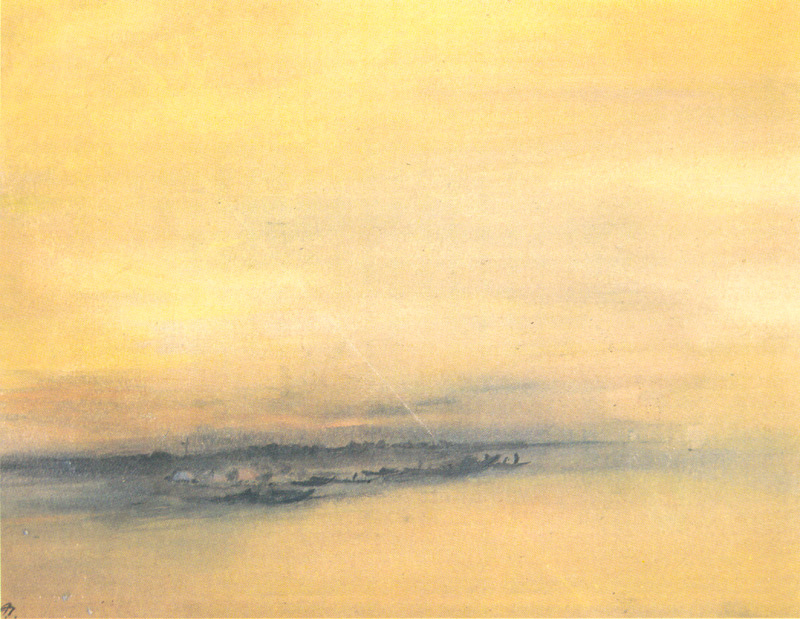
Photograph: Public Domain
Direct perception
“So I say, the Self is not reached. You are the Self. You are already That.”
—Sri Ramana Maharshi
Philip Brown is an independent researcher in the field of Contemplative Studies. He spent his working life teaching children with severe and multiple disabilities and developing training programmes to prevent the physical and sexual abuse of people with disabilities. Baptised and confirmed in The Church of England, he has practised meditation for 40 years and over the last 22 years, he has studied and practised the Dzogchen Teachings of Tibetan Buddhism. Prior to that, he practised Transcendental Meditation and Vipassana (Insight) Meditation. Since the age of 14, when he first read Aldous Huxley’s The Perennial Philosophy, he has had an abiding interest in this philosophy and the field of comparative religion.
In a previous guest post for The Culturium, Philip offered us a selection of verse from one of Sufism’s finest poets, Fakhruddin ‘Araqi. This week’s guest post examines the nature and role of mysticism in fostering global religious tolerance, extracted from a longer, brilliant and scholarly essay entitled, Mysticism, the Perennial Philosophy and Interfaith Dialogue (details of how to obtain the unabridged copy are outlined at the end).
o0o
IN A WORLD in which religious sectarianism and religiously justified violence are all too common, the possibility that an essential mystic truth is shared by most, if not all the world’s great religious traditions, nurtures and strengthens the hope that this discrimination and violence, born of sectarianism, may eventually be replaced by sincere and comprehensive interfaith dialogue and cooperation based on love, compassion and wisdom.
In the hope of making some small contribution to the wider acceptance of such a truth, an anthology of quotations is offered from the writings of renowned and acknowledged mystics from various religious traditions. These writings express their understanding that nondual consciousness, which by nature is transcendent and immanent, is a fundamental, if not the fundamental aspect, of the ultimate nature and realization of Divinity—a Divinity which, by its very nondual nature as well as our dualistic conception of nonduality, is not, nor can be, exclusive to any religion.
Given the ineffable nature of mystic experience, attempts to provide a “definition of mysticism” seem “a fool’s errand” or at very least an oxymoron. Nonetheless, while acknowledging that a full understanding of mysticism can only be apprehended through direct experience, the following descriptions of mysticism are offered to provide some provisional sense of the term’s meaning. According to the scholar and philosopher of mysticism, Professor Walter T. Stace:
The most important, the central characteristic in which all fully developed mystical experiences agree, and which in the last analysis is definitive of them and serves to mark them off from other kinds of experiences, is that they involve the apprehension of an ultimate nonsensuous unity of all things, a oneness or a One to which neither the senses nor reason can penetrate. In other words, it entirely transcends our sensory-intellectual consciousness.

Photograph: Public Domain
Another source of insight into the nature of mystic experience comes from The Minimum Working Hypothesis developed by Aldous Huxley in his 1944 essay in Vedanta and the West to encapsulate his understanding of the truths shared by contemplative/esoteric spiritual practitioners. This hypothesis states:
THAT there is a Godhead, Divine Ground of Being, or Brahman that our reality depends upon for its existence.
THAT the Ground both transcends the world and is immanent as the world.
THAT it is possible for human beings to love, know and, from virtually, to become actually identified with the Divine Ground.
THAT to achieve this unitive knowledge is the ultimate end and purpose of human existence.
THAT there is a Way or Dharma that must be obeyed if people are to achieve their final end, and this Way is a way of peace, love, humility and compassion.
The Christian Contemplative and Franciscan Friar Richard Rohr wrote:
To speak of mysticism in simple terms means we speak of experiential knowledge of God instead of merely mental or cognitive knowledge of God … God is another word for the heart of everything and for everything precisely in its connectedness.
Similarly, and with striking brevity, Professor Brian Colless defined mysticism as:
… religious experience involving a non-rational encounter with ultimate divine reality, which imparts a sense of unity.
Mystic experience, therefore, refers to the non-rational direct apprehension of Divinity [i.e. the non-rational direct apprehension of the Absolute Undifferentiated Unity of Being, which as the Ground of Being, is both the inherent Primordial Nature of, and origin of, all manifest forms, human or otherwise]. This “non-rational encounter with ultimate divine reality” [i.e. direct apprehension of ultimate reality] mentioned by Professor Colless is a core feature of mysticism.
It is also important to note that describing mysticism as a “non-rational” process does not imply “irrationality” but rather, the use of capacities other than rational thinking. This is because rational thinking is not sufficient to generate metaphysical/mystic understanding. As explained by the renowned Vedantist-Hindu mystic Adi Shankara, in relation to “the Atman or immanent eternal Self [that is] one with Brahman, the Absolute Principle of all existence”:
… the pure truth of Atman can be reached by meditation, contemplation, and other spiritual disciplines such as the knower of ‘Brahman’ [Divinity] may prescribe—but never by subtle argument.
Similarly, the great Sufi mystic and metaphysician Ibn ‘Arabi held that “speculative philosophy and theology were of limited value and that the intellect could not lead to certainty and the truths it revealed were only relative”. He said:
The science of philosophy is not totally in vain but there is no single thing that cannot be known through revelation or spiritual experience. Besides, to devote oneself to speculative reflection is a veil, and if there are a few of those philosophers who experience spiritual states, such as Plato the sage, that is extremely rare.
The difference between the “concept of mysticism” and “mystic experience” is important. As stated by Professor Stace in his work The Teachings of the Mystics:
… a mystical idea is a product of the conceptual intellect, whereas a mystical experience is a non-intellectual mode of consciousness.
Hence Ken Wilber noted:
… dualism is ultimately overcome, not with any model [theory], no matter how ‘nondualistic’ it calls itself but only with satori, which is a direct and radical realization (or change in level of consciousness), and that transformation cannot be delivered by any model, but only by prolonged spiritual practice. As the traditions say, you must have the actual experience to see what is actually revealed, just as you must actually see a sunset to know what is involved.
It is also for this reason that Adi Shankara explained:
Disease is not cured by pronouncing the name of medicine, but by taking medicine. Deliverance is not achieved by repeating the word ‘Brahman’ but by directly experiencing [it] …
o0o
As to how the reader might best approach reading the following extracts from the Anthology, it is respectfully suggested that a deeper understanding of these precious teachings is likely to be fostered by:
- repeated and considered reading of each quotation;
- careful review of the specialized terms in the Glossary [for further details on how to obtain the Glossary, see below];
- and, perhaps most importantly, preceding each session of reading with contemplative prayer, meditation or contemplation as per the contemplative practice within the reader’s spiritual or religious tradition.

Photograph: Public Domain
Union may be symbolized by two wax candles, the tips of which touch each other so closely that there is but one light; or again, the wick, the wax, and the light become one, but the one candle can again be separated from the other and the two candles remain distinct; or the wick may be withdrawn from the wax. But spiritual marriage is like rain falling from heaven into a river or stream, becoming one and the same liquid, so that the river and rain water cannot be divided; or it resembles a streamlet flowing into the ocean, which cannot afterwards be disunited from it. This marriage may also be likened to a room into which a bright light enters through two windows—though divided when it enters, the light becomes one and the same.
—St Teresa of Avila (1515–1582), Spain (Christian Mystic & Saint)

Photograph: Public Domain
Now I shall tell you the nature of this absolute Witness. If you recognize it, you will be freed from the bonds of ignorance, and attain liberation.
There is a self-existent Reality, which is the basis of our consciousness of ego. The Reality is the Witness of the states of ego consciousness and of the body. That Reality is the constant Witness in all three states of consciousness—waking, dreaming, and dreamless sleep. It is your real Self. That Reality pervades the universe. It alone shines. The universe shines with Its reflected light.
Its essence is timeless awareness. It knows all things, Witnesses all things, from the ego to the body. It is the Witness of pleasure and pain and the sense-objects. This is your real Self, the Supreme being, the Ancient. It never ceases to experience infinite release. It is unwavering. It is Spirit itself.
—Adi Shankara (788–820), India (Hindu Mystic & Saint)
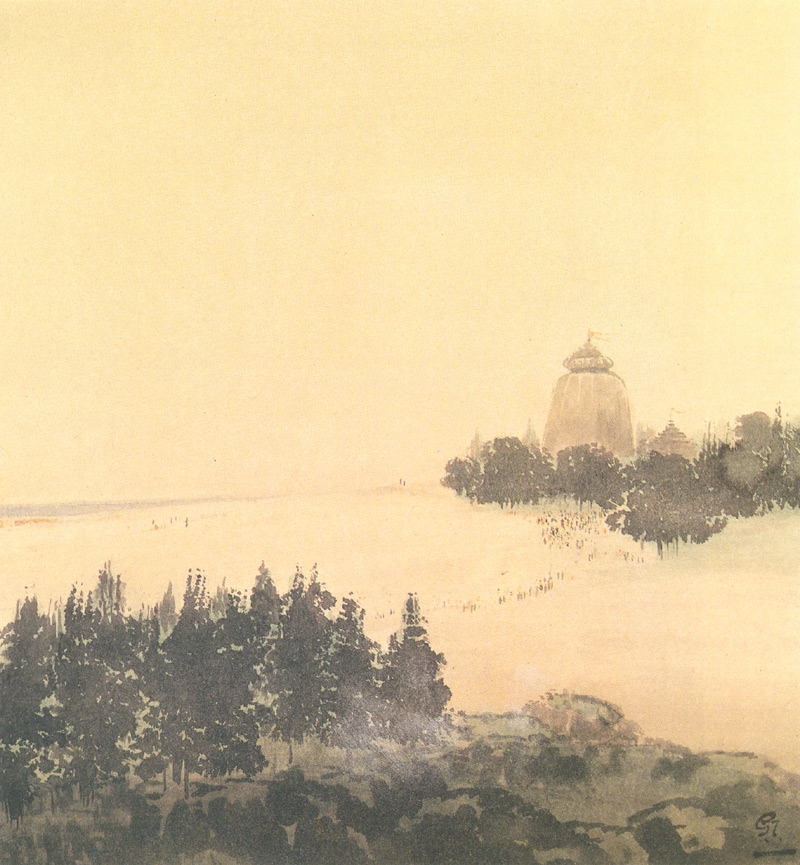
Photograph: Public Domain
There is no reaching the Self. If the Self were to be reached, it would mean that the Self is not now and here, but that it should be got anew [is yet to be obtained]. What is got afresh, will also be lost. So it will be impermanent. What is not permanent is not worth striving for. So I say, the Self is not reached. You are the Self. You are already That. The fact is that you are ignorant of your blissful state. Ignorance supervenes and draws a veil over the pure Bliss. Attempts are directed only to remove this ignorance. This ignorance consists in wrong knowledge. The wrong knowledge consists in the false identification of the Self with the body, the mind, etc. This false identity must go and there remains the Self.
—Sri Ramana Maharshi (1879–1950), India (Hindu Mystic & Sage)

Photograph: Public Domain
The Great Way isn’t difficult for
those who are unattached to their preferences.
Let go of longing and aversion,
and everything will be perfectly clear.
When you cling to a hairbreadth of distinction,
heaven and earth are set apart.
If you want to realize the truth,
don’t be for or against.
The struggle between good and evil
is the primal disease of the mind.
Not grasping the deeper meaning,
you just trouble your mind’s serenity.
As vast as infinite space,
it is perfect and lacks nothing.
But because you select and reject,
you can’t perceive its true nature.
Don’t get entangled in the world;
don’t lose yourself in emptiness.
Be at peace in the oneness of things,
and all errors will disappear by themselves.If you don’t live the Tao,
you fall into assertion or denial.
Asserting that the world is real,
you are blind to its deeper reality;
denying that the world is real,
you are blind to the selflessness of all things.
The more you think about these matters,
the farther you are from the truth.
Step aside from all thinking,
and there is nowhere you can’t go.
Returning to the root, you find the meaning;
chasing appearances, you lose their source.
At the moment of profound insight,
you transcend both appearance and emptiness.
Don’t keep searching for the truth;
just let go of your opinions.For the mind in harmony with the Tao,
all selfishness disappears.
With not even a trace of self-doubt,
you can trust the universe completely.
All at once you are free,
with nothing left to hold on to.
All is empty, brilliant,
perfect in its own being.
In the world of things as they are,
there is no self, no non-self.
If you want to describe its essence,
the best you can say is ‘Not-two’.
In this ‘Not-two’ nothing is separate,
and nothing in the world is excluded.
The enlightened of all times and places
have entered into this truth.
In it there is no gain or loss;
one instant is ten thousand years.
There is no here, no there;
infinity is right before your eyes.
The tiny is as large as the vast
when objective boundaries have vanished;
the vast is as small as the tiny
when you don’t have external limits.
Being is an aspect of non-being;
non-being is no different from being.
Until you understand this truth,
you won’t see anything clearly.
One is all; all are one.
When you realize this,
what reason for holiness or wisdom?
The mind of absolute trust
is beyond all thought, all striving,
is perfectly at peace, for in it
there is no yesterday, no today, no tomorrow.
—Seng Ts’an (late 6th century), China (Zen Master)
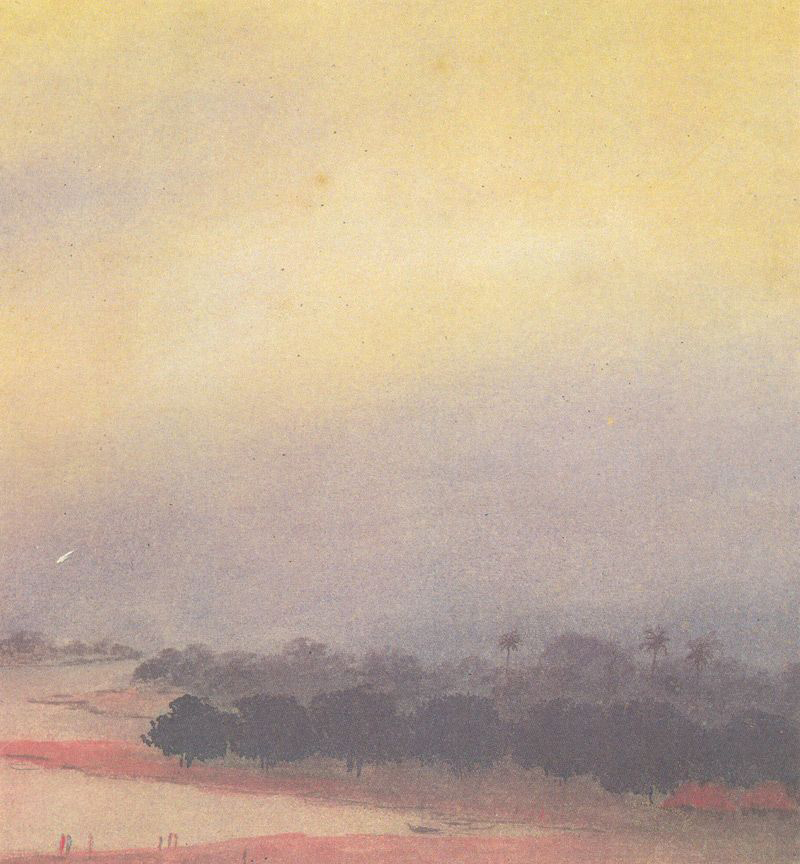
Photograph: Public Domain
Do not ask whether the Principle is in this or in that; it is in all beings. It is on this account that we apply to it the epithets of supreme, universal, total … It has ordained that all things should be limited, but Itself unlimited, infinite. As to what pertains to manifestation, the Principle causes the succession of its phases but is not this succession. It is the author of causes and effects but is not the causes and effects. It is the author of condensations and dissipations (birth and death, changes of state), but is not itself condensations and dissipations. All proceeds from It and is under its influence. It is in all things, but it is not identical with beings, for it is neither differentiated nor limited.
—Chuang Tzu (4th century BC), China (Renowned Taoist Master & Student of Lao Tzu)
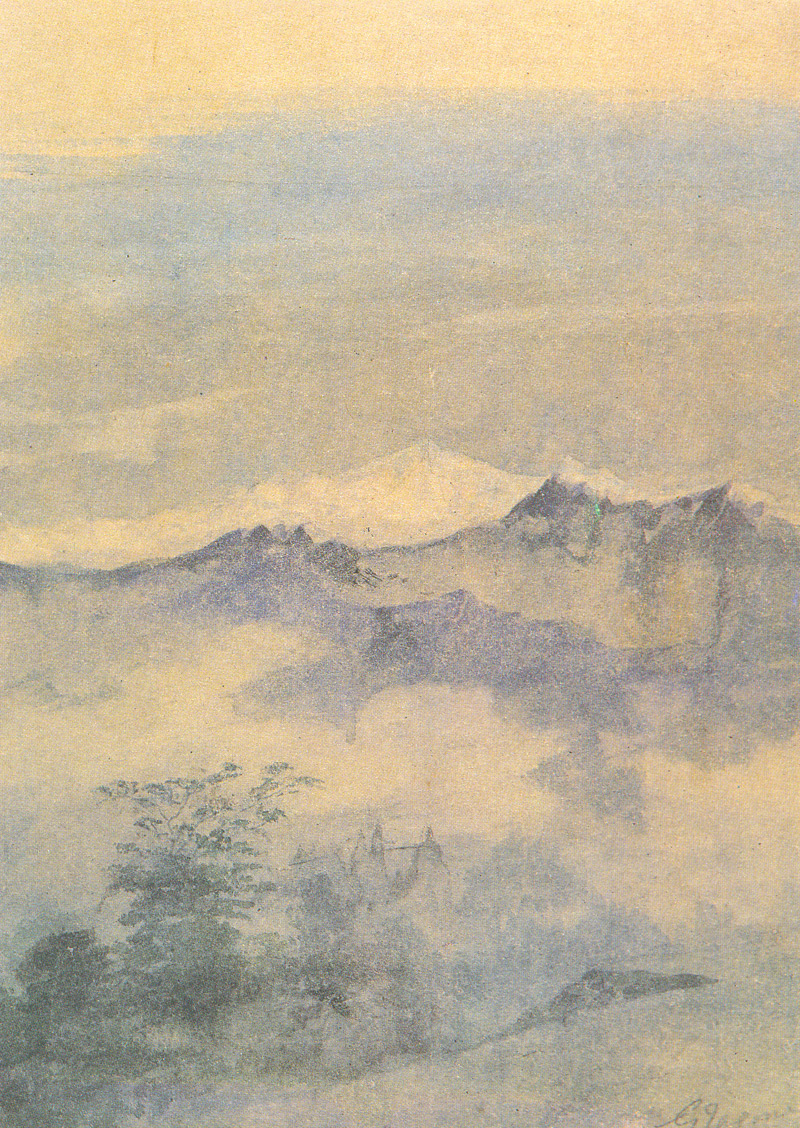
Photograph: Public Domain
In this quotation, Bulent Rauf answers the question: ‘What is the single most important point that must be understood by a person who wants to know?’
It is that there is only One, Unique, Absolute, Infinite Existence. It must be more than an idea. One has to be so completely certain of it that one adopts it through reason and an intuition as the basic unshakeable fact of one’s existence. When it is like that in one’s existence then every possible ramification that occurs to one is seen as not being outside The Existence, but as being an aspect of it. Accept and completely adopt the idea that there is only the Unique, Absolute Existence, apart from which there is not. Then constantly, or as much as possible, keep it in mind. Then, as only He can adopt such an idea, you disappear in the face of the awareness of this idea (which is Him in any case—who else could think of it?). Then your consciousness of this idea is your consciousness of His Existence; His consciousness of Himself. Then where are you? You never were. He shows you He is yourself, then bit by bit He shows you how He is all that there is. These showings are His caprices, until all exterior existence is known as Him. He shows you He is you, then shows you (Himself) that all else is Him. In the instant, all so-called progress is annihilated in Him.
—Bulent Rauf (1911–1987), Turkey (instrumental in the foundation of the Beshara Trust, Chisholme Institute & the Muhyiddin Ibn ‘Arabi Society)
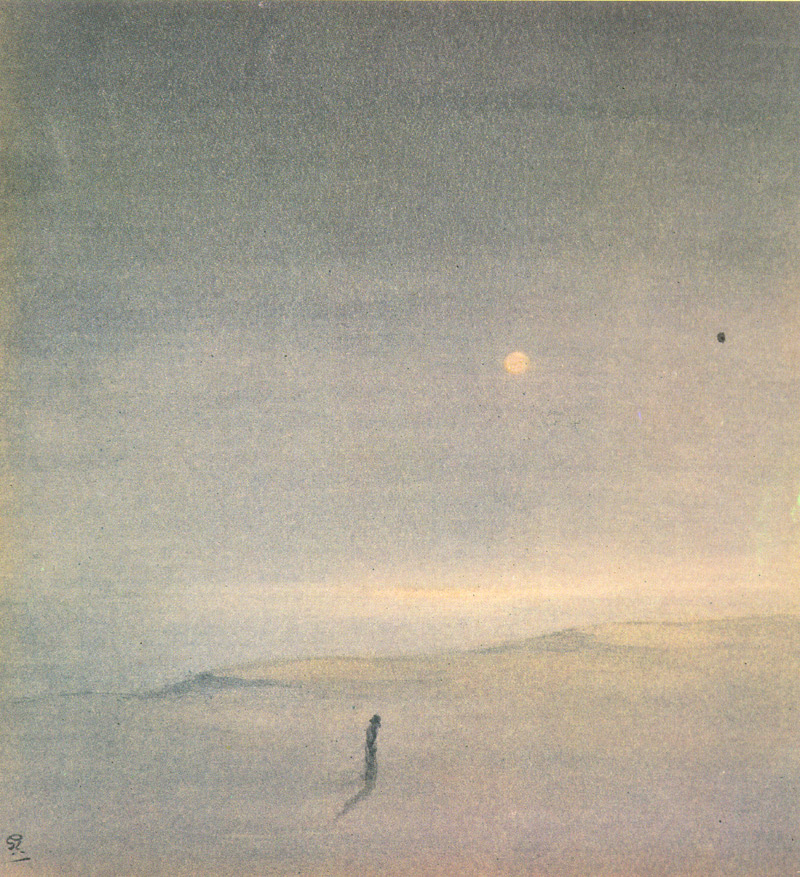
Photograph: Public Domain
Mysticism, the Perennial Philosophy and Interfaith Dialogue was written in memory of Philip’s late brother, Ian Allan Brown, who was a Sufi and fellow Wayfarer.
For a complete, unabridged version of the essay, including source material, references and Glossary, please contact Philip via: interfaith[dot]contemplative[at]gmail[dot]com
For a condensed, online version of the essay, visit:
The Role of Mysticism in Fostering Interfaith Dialogue and Tolerance
Post Notes
- SoSAFE!
- Fakhruddin ‘Araqi: Divine Flashes
- Philip Brown: Transcendence through Beauty in Art & Nature
- Philip Brown: Contemplative Art – A Supreme Gift
- Thomas Merton: The Statues of Polonnaruwa
- Teresa of Ávila: The Ecstasy of Love
- Lao Tzu: Tao Te Ching
- Philip Jacobs: Dance of the Dervishes
- Jean R. Dedieu: Jnani, The Silent Sage of Arunachala
- William Blake: All Religions Are One
